Learning disabilities are problems that affect the brain's ability to process information, making it difficult for students to learn as quickly as others. They are characterized by significant difficulties acquiring skills like listening, speaking, reading, writing, reasoning or math. Learning disabilities are often identified through testing that compares cognitive ability to academic achievement. They can be caused by issues during pregnancy/birth, genetic factors, accidents or other central nervous system dysfunction. Common types include dyslexia, dysgraphia, dyscalcula and dyspraxia.


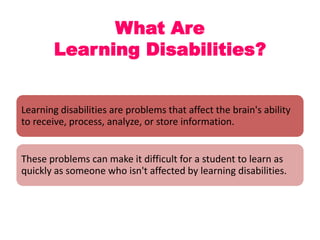


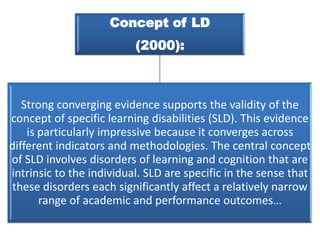
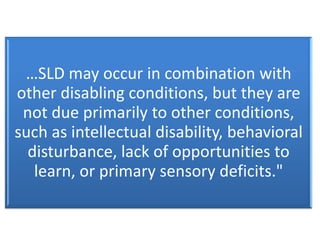








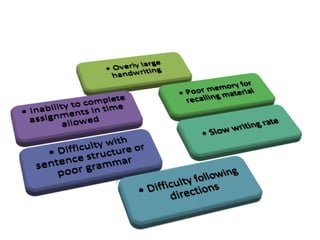


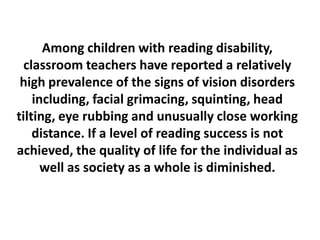







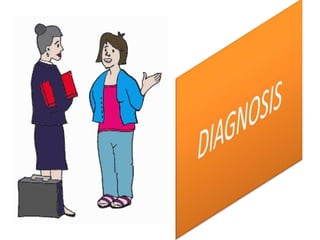






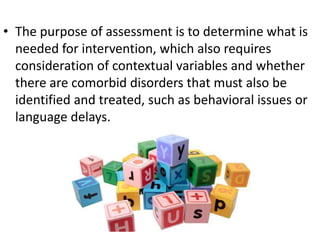



![Although a learning disability cannot be "cured", its impact can be
lessened through instructional intervention and compensatory
strategies. Possible Modifications for Students with Learning
Disabilities may be necessary.
Some of these, as listed on the SMC student "Recommended
Accommodations" form, might include:
Alternative Assignment(s) [i.e. project, paper, demonstration,
presentation, etc.]
Books on tape
Testing Accommodations
Test-proctoring by DSS
Extended time for tests.
Test to be read to the student.
Test to be dictated into tape recorder for transcription
Use of a word processor, language master and/or spell-check](https://image.slidesharecdn.com/learningdisabilityreport-140120035242-phpapp01/85/Learning-Disability-38-320.jpg)









